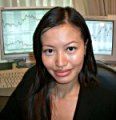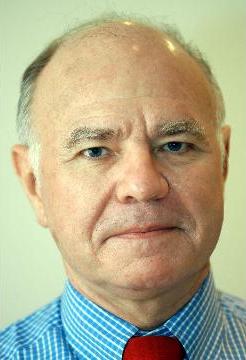
Grace Cheng
I RECENTLY attended The World Money Show in Hong Kong (17-19 March) which was an event that brought together one of the finest gatherings of global financial experts including Jim Rogers, Steve Forbes, Victor Chu, Marc Faber, and many others.
There couldn’t have been a more appropriate time for this forum as global markets are undergoing unprecedented turmoil.
Marc Faber, fund manager and publisher of the widely read monthly investment newsletter, The Gloom Boom & Doom Report, shared with us his views on the global crisis, the US Dollar, stocks, commodities and US Treasury bonds.
First synchronized global recession
Marc Faber said this is the first synchronized global boom and bust cycle in over 200 years. It started as interest rates were very low between 2001 and 2004 even as the US economy was expanding.
When rates were finally raised between 2004 and 2007, the rate increase didn’t have much effect as lenders loosened lending policies and money was still being pumped into the system from the private sector.

Marc Faber
All the money in the system led to consumption and imports from China which led to stronger commodities demand from commodity producing countries and higher commodity and oil prices. Because of this, there was a rare bubble in almost everything including real estate, stocks, commodities and bonds.
The only bubble that has yet to burst is that of US Treasury bonds which have experienced a 28-year bull market and may have peaked on Dec 21 2008.The only asset that wasn’t in a bubble was the US Dollar and Faber believes it could go down again versus currencies such as the Australian dollar (AUD), the Canadian dollar (CAD) and the Euro (EUR).
He also believes that bonds have peaked and that we will see bond yields increasing over the next few years as they did after they were so low in the 1940s. In the 1940s they were at 2.7%, and then by the 1970s, they had gone up to 16.7%.
How to take advantage of these conditions?
Firstly, Marc Faber said the only thing he is sure about is that volatility will continue for quite some time. He did however say that he believes the US Dollar could depreciate versus commodity currencies (AUD, CAD, etc) as well as versus the Euro. Since the US Dollar seems to currently be inversely correlated with the stock market, a recovering market could be led by a lower US Dollar.
Then there is the short US Treasuries trade. Faber said treasuries may have peaked in December 2008 and if so, that would be the end of a 28-year bull run in T-bonds, which could be followed by a long bear market and higher yields.
Furthermore, if the US government continues to print money, it would devalue the US Dollar, and foreign investors might require a higher yield to be interested in continuing to invest in treasuries.Finally there is the long commodities trade.
Faber said that currently the prices of many raw materials are lower than they were in the last bear market and that he believes industrial commodities will have more room to move higher than precious metals.
As for stocks, he said he thinks US stocks are still expensive when you take future P/E ratios into consideration, and that many Asian equities are relatively cheaper to those in the US, but that the recovery could take a long time and there will be a lot of volatility during this period.
Recent stories by Grace:
ETFs: How to choose them
Grace Cheng's interview with Jim Rogers


